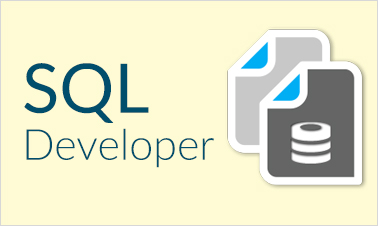

- #Interview questions for oracle sql developer update
- #Interview questions for oracle sql developer code
- #Interview questions for oracle sql developer series
%ROWCOUNT : The number of rows that are updated, deleted or fetched. %ISOPEN : Checks if the cursor is open or not TTITLE and BTITLE commands that control report headers and footers.Ģ8) Show the cursor attributes of PL/SQL. Group functions give results based on groups of rows, as opposed to individual rows. INITCAP, UPPER, SUBSTR, LOWER and LENGTH are all character functions.
#Interview questions for oracle sql developer series
It is much more efficient as each statement is not individually stripped off.Ģ4) What packages are available to PL SQL developers?ĭBMS_ series of packages, such as, DBMS_PIPE, DBMS_DDL, DBMS_LOCK, DBMS_ALERT, DBMS_OUTPUT, DBMS_JOB, DBMS_UTILITY, DBMS_SQL, DBMS_TRANSACTION, UTL_FILE.
#Interview questions for oracle sql developer code
Thus, all PL/SQL code is sent directly to database engine. No, SQL*Plus does not have a PL/SQL Engine embedded in it. IS NULL and IS NOT NULL can be used to check specifically to see whether the value of a variable is NULL or not.Ģ3) Does SQL*Plus also have a PL/SQL Engine? NVL converts NULL to another specified value. The %ISOPEN cursor status variable can be used.Ģ1) Show the two PL/SQL cursor exceptions. SQLCODE returns the value of the number of error for the last encountered error whereas SQLERRM returns the message for the last error.Ģ0) If a cursor is open, how can we find in a PL SQL Block? If it is used, it must come first in a stand alone file.ġ8) How many triggers can be applied to a table?Ī maximum of 12 triggers can be applied to one table.ġ9) What is the importance of SQLCODE and SQLERRM?

It is fixed by using views or temporary tables, so database selects one and updates the other.ġ7) When is a declare statement required?ĭECLARE statement is used by PL SQL anonymous blocks such as with stand alone, non-stored procedures.
#Interview questions for oracle sql developer update
It occurs when a trigger tries to update a row that it is currently using.

This allows the application to process each row sequentially as the cursor returns it. If a query returns multiple rows of data, the program defines an explicit cursor. The user cannot control or process the information in this cursor. With SAVEPOINT, only part of transaction can be undone.ġ5) Define Implicit and Explicit Cursors.Ī cursor is implicit by default. It undoes all the work done by the user in a transaction.


 0 kommentar(er)
0 kommentar(er)
